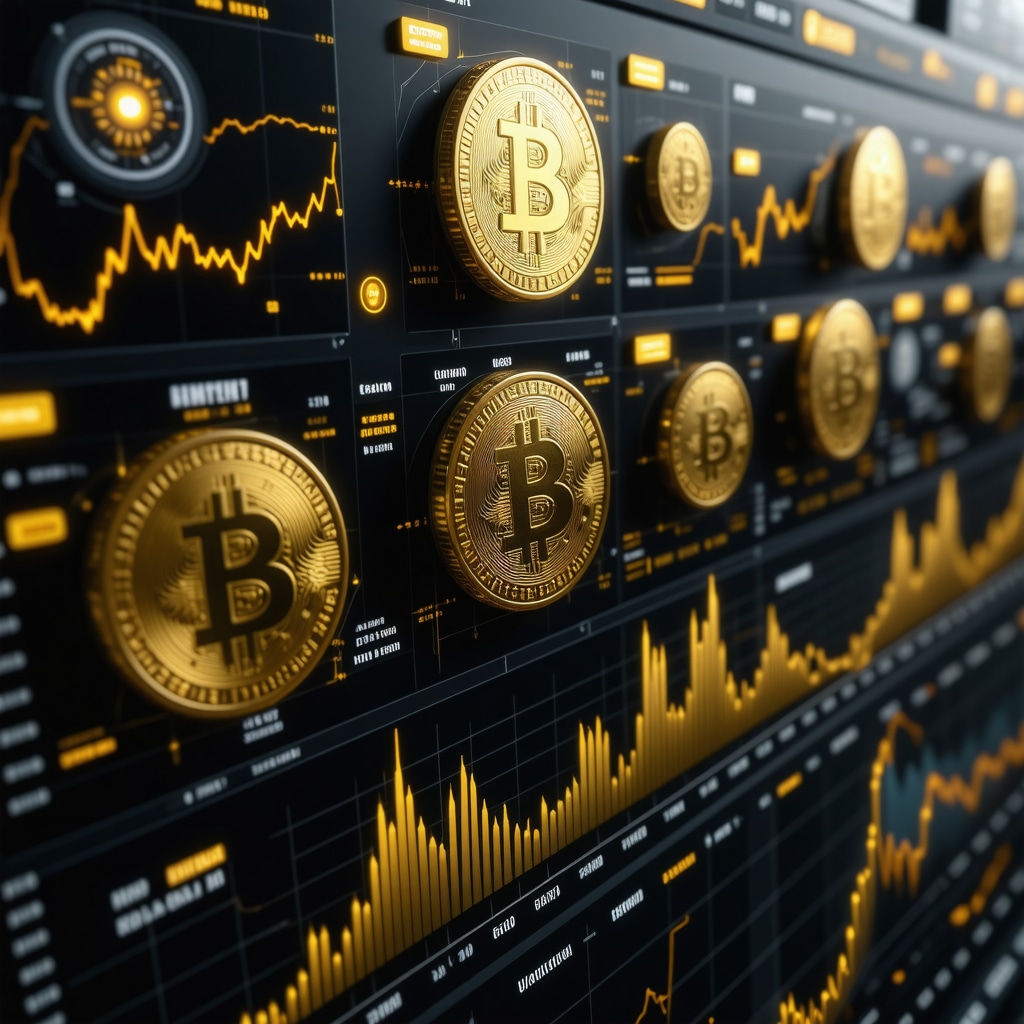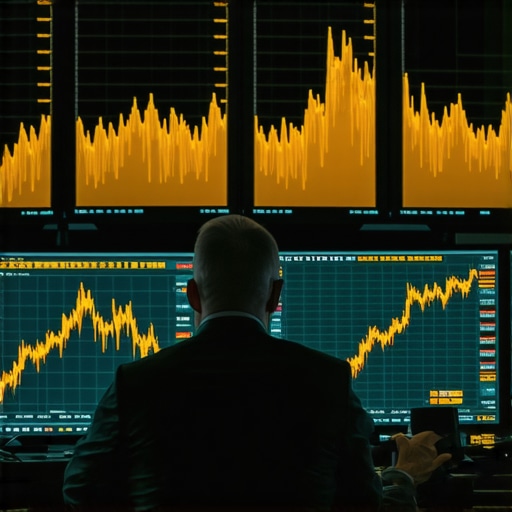Unlocking the Complex Dynamics of Gold Futures in 2025
As an elite trader or financial strategist, understanding the nuances of gold futures trading becomes vital in navigating the turbulent waters of 2025’s volatile markets. Gold, long revered as a safe haven, embodies a multifaceted asset class whose price movements are influenced by macroeconomic shifts, geopolitical tensions, and central bank policies. This article delves into expert-level insights to empower traders with strategic foresight and nuanced understanding necessary for maximizing profitability in this sophisticated arena.
Deciphering Gold Futures’ Price Drivers: The Intersection of Macro and Micro Factors
What are the key economic indicators shaping gold futures in 2025?
In 2025, economic indicators such as inflation rates, interest rate trajectories, and currency fluctuations significantly impact gold futures. Elevated inflation often spurs demand for gold as an inflation hedge, whereas rising interest rates can exert downward pressure by increasing the opportunity cost of holding non-yielding assets. For a comprehensive analysis, consult resources like the gold price drivers report which synthesizes these macroeconomic influences.
Strategic Approaches: Leveraging Futures for Diversification and Hedging
How can institutional traders optimize futures contracts to hedge against inflation?
Institutions often employ sophisticated strategies such as calendar spreads, options overlays, and delta-neutral portfolios to hedge inflation risk. These techniques enable traders to lock in profits and mitigate adverse price swings. The use of supply-demand analytics informs optimal entry points, aligning futures positions with supply chain dynamics and geopolitical developments.
Expert Insights: Navigating Market Sentiment and Speculative Risks
Market sentiment, often driven by geopolitical crises or monetary policy shifts, can induce rapid price swings in gold futures. Experienced traders monitor open interest, volume trends, and sentiment indicators to anticipate short-term reversals. Recognizing these signals enables strategic entries and exits, essential for profit maximization.
In-Depth Analysis: The Role of Central Banks and Global Reserves
The accumulation or divestment of gold reserves by central banks remains a pivotal factor influencing futures prices. 2025 sees continued strategic purchases by key nations, which can signal long-term bullish trends. For a deeper understanding, review the central bank activity report.
How can traders balance technical analysis with fundamental insights in futures trading?
Blending technical indicators such as moving averages, RSI, and Fibonacci retracements with fundamental insights from supply-demand reports and macroeconomic data creates a robust framework for decision-making. This integrated approach reduces risks and enhances profitability potential.
For comprehensive strategies and expert tips, explore our advanced trading techniques section, and consider contributing your insights to foster a collaborative trading community in 2025.
Unveiling Hidden Opportunities in Gold Futures for 2025
As an elite trader or financial strategist, delving into the intricacies of gold futures reveals a landscape filled with nuanced opportunities and sophisticated strategies. In 2025, understanding the delicate balance between macroeconomic indicators, geopolitical developments, and market sentiment is crucial for maximizing returns. This article explores advanced insights to empower traders with cutting-edge techniques and strategic foresight, ensuring they stay ahead in this dynamic domain.
Decoding the Impact of Global Monetary Policies on Futures Pricing
How do shifts in central bank policies influence gold futures in today’s complex economic environment?
Central banks worldwide continue to influence gold futures through their monetary policies, including interest rate adjustments and reserve management. Strategic purchases or divestments by major reserves can signal long-term trends, while interest rate hikes often lead to short-term price corrections. To analyze these dynamics comprehensively, consult resources like the central bank activity report, which provides essential insights into policy impacts on market movements.
Harnessing Quantitative Models for Futures Market Precision
What advanced quantitative frameworks can traders deploy to refine their futures trading strategies in 2025?
Quantitative models, including machine learning algorithms and statistical arbitrage frameworks, enable traders to identify subtle patterns and predict price movements with higher accuracy. Techniques such as neural networks, Kalman filters, and sentiment analysis algorithms have become integral to modern trading desks. For an in-depth understanding of integrating these tools, explore the advanced trading techniques section, which offers practical guidance on deploying these models effectively.
Expert-Level Question: Can Gold’s Role as a Portfolio Hedge Evolve in Response to Emerging Economic Paradigms?
As markets evolve and economic paradigms shift—particularly with the rise of digital currencies and changing geopolitical alliances—does gold’s traditional role as a safe haven and inflation hedge remain intact, or is it poised to adapt? Experts argue that while gold’s core attributes persist, its strategic utility may diversify, especially in multi-asset portfolios emphasizing resilience against systemic risks. For a comprehensive perspective, review the gold vs. stocks analysis and consider how emerging assets influence portfolio diversification in 2025.
Stay engaged with industry insights by commenting below or sharing this article with fellow traders. For those keen on deepening their understanding, our detailed guides on investing in gold offer actionable steps tailored for 2025’s evolving landscape.
Harnessing Advanced Quantitative Models to Predict Gold Price Movements in 2025
In the realm of gold futures trading, leveraging cutting-edge quantitative frameworks is essential for gaining a competitive edge. Machine learning algorithms, including neural networks and ensemble methods, enable traders to sift through vast datasets—ranging from macroeconomic indicators to sentiment analysis—to uncover subtle patterns that elude traditional analysis. These models can adapt dynamically to market shifts, providing real-time predictive insights that enhance decision-making accuracy.
For example, neural networks trained on historical price data combined with geopolitical event indicators can forecast short-term price volatility with remarkable precision. Incorporating Kalman filters allows traders to refine these predictions further by filtering noise from real-time data streams, resulting in more reliable signals for entry and exit points.
To implement such models effectively, traders should collaborate with data scientists or utilize sophisticated trading platforms that integrate AI-driven analytics. Continually validating models against out-of-sample data ensures robustness and prevents overfitting—a common pitfall in quantitative trading. As these tools evolve, staying abreast of the latest developments in AI and statistical arbitrage remains critical for maintaining an edge in the complex landscape of gold futures markets.
Emerging Economic Paradigms and Gold’s Evolving Portfolio Role
Will digital currencies and geopolitical shifts redefine gold’s function as a safe haven?
As digital currencies like Bitcoin gain prominence, alongside shifting geopolitical alliances, the traditional role of gold as the ultimate safe haven faces new dynamics. While gold’s tangible nature and historical resilience continue to underpin its appeal, investors are increasingly considering its diversification potential within multi-asset portfolios that include cryptocurrencies, ESG assets, and emerging market equities.
Experts argue that gold’s core attributes—liquidity, scarcity, and recognition—remain unchanged, but its strategic utility is expanding. For instance, in periods of fiat currency instability, gold and digital assets may serve as complementary hedges against systemic risks, offering diversification benefits that surpass traditional asset classes.
Moreover, the evolution of financial technology platforms facilitates seamless allocation and rebalancing among these assets, empowering sophisticated investors to optimize risk-adjusted returns. Therefore, understanding the nuanced interplay between emerging assets and traditional hedges is crucial for portfolio resilience in 2025 and beyond.
< >
>
Harnessing Deep Quantitative Analytics to Predict Gold Futures Movements in 2025
In the fiercely competitive arena of gold futures trading, harnessing advanced quantitative models such as reinforcement learning and genetic algorithms can significantly enhance predictive accuracy. These sophisticated frameworks allow traders to adapt dynamically to market fluctuations, integrating vast datasets ranging from macroeconomic indicators to geopolitical developments. For instance, reinforcement learning agents can continually refine their strategies through simulated environments, offering real-time adaptation to evolving market conditions. To implement these cutting-edge techniques, traders should collaborate with data scientists or leverage specialized AI-driven trading platforms that incorporate these models, ensuring continuous validation against out-of-sample data to prevent overfitting and maintain robustness.
Decoding the Influence of Geopolitical Shifts and Digital Assets on Gold’s Portfolio Role
Could emerging geopolitical alliances and the rise of cryptocurrencies redefine gold’s safe haven status in 2025?
As geopolitical landscapes evolve with shifting alliances and digital currencies gain traction, gold’s traditional role as the quintessential safe haven is being reexamined. While gold’s intrinsic qualities—scarcity, liquidity, and historical resilience—remain intact, its strategic function within diversified portfolios is expanding to include digital assets like Bitcoin and blockchain-based securities. Experts suggest that during periods of fiat currency instability or geopolitical tensions, a combined allocation of gold and select cryptocurrencies can offer superior systemic risk mitigation. This diversification strategy, supported by advanced portfolio optimization techniques, enables investors to hedge against systemic shocks more effectively. For comprehensive insights, refer to the portfolio diversification report.

Expert Insights & Advanced Considerations
1. Gold’s Role in Diversified Portfolios Is Expanding
As digital currencies and geopolitical shifts reshape financial landscapes, gold’s traditional status as a safe haven is evolving. Experts emphasize integrating gold with emerging assets like cryptocurrencies to enhance portfolio resilience against systemic risks.
2. Quantitative Models Are Transforming Market Predictions
Advanced AI-driven frameworks such as reinforcement learning and neural networks are enabling traders to detect subtle market patterns, offering a competitive edge in forecasting gold futures movements amid complex macroeconomic environments.
3. Central Bank Activities Continue to Drive Price Trends
Monitoring central bank gold reserve adjustments remains essential. Strategic purchases by major economies can signal long-term bullish trends, while divestments may indicate shifting monetary policies impacting futures prices.
4. Geopolitical Tensions and Digital Assets Interplay
Emerging geopolitical alliances and the rise of cryptocurrencies are prompting a redefinition of gold’s safe haven role. Diversifying with digital assets can offer enhanced systemic risk mitigation, supporting more resilient investment strategies.
5. Integration of Technical and Fundamental Analysis Provides Strategic Advantage
Blending technical indicators—like Fibonacci retracements—with macroeconomic fundamentals ensures a comprehensive approach, reducing risks and optimizing profit potential in 2025’s volatile markets.
Curated Expert Resources
- Gold Price Drivers Report: An authoritative analysis synthesizing macroeconomic influences on gold prices, essential for strategic forecasting.
- Central Bank Activity Report: Detailed insights into reserve management actions by global central banks, crucial for understanding long-term market trends.
- Advanced Trading Techniques: A comprehensive guide on deploying AI and quantitative models in gold futures trading, recommended for sophisticated traders.
- Portfolio Diversification Analysis: Expert evaluations on integrating gold with emerging assets like cryptocurrencies, facilitating resilient multi-asset strategies.
Final Expert Perspective
Mastering gold futures in 2025 demands a nuanced understanding of macroeconomic dynamics, geopolitical influences, and sophisticated analytical tools. The evolving landscape underscores the importance of integrating expert insights with cutting-edge strategies, ensuring traders can navigate volatility and capitalize on emerging opportunities. Engaging deeply with authoritative resources and continuously refining analytical frameworks will be vital for sustained success. Share your insights or explore further at our comprehensive gold investment guides to stay ahead in this complex domain.










